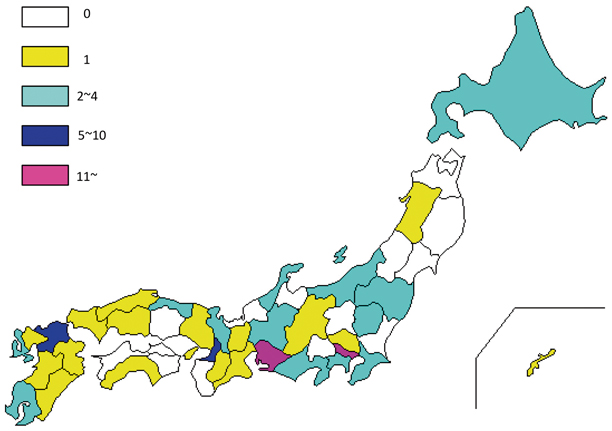Fig. 16.1
The research field of sleep later expanded to include biological rhythms. The membership grew rapidly in the past 10 years, and the numbers reached more than 3000 in 2012
The history of growth of sleep medicine in Japan is rather recent. It was only in 1994 when all night polysomnography (PSG) was covered by the public health insurance. Prior to that, PSG was performed only for research purposes in a few university hospitals or research institutes, mostly by psychiatrists or basic researchers. No clinical polysomnographer existed at that time. The number of sleep disorder clinics increased rapidly, since PSG was covered by the public health insurance. Pulmonologists and otolaryngologists, who were not sleep specialists, ran most of the newly developed sleep disorder clinics, only caring for patients with sleep-disordered breathing (SDB) . The growth of sleep medicine clinics and laboratories accelerated rapidly following the news in 2003 that the bullet train driver dozed off while driving, and he was reported to be suffering from sleep apnea (Fig. 16.2).


Fig. 16.2
The growth of sleep medicine clinics and laboratories accelerated rapidly following the news in 2003 that the bullet train driver dozed off while driving, and he was reported to be suffering from sleep apnea
The Journal of Sleep and Biological Rhythm (SBR), launched in 2001, became the official journal of JSSR and the Asian Sleep Research Society (ASRS) in 2002.
Stay updated, free articles. Join our Telegram channel

Full access? Get Clinical Tree





